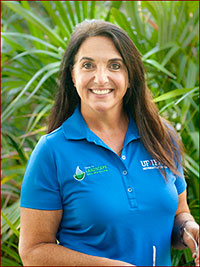Wendy's Wanderings
November 8, 2018
What to Do with All Those Leaves
Oaks, elms, crapemyrtles, maples, and many other deciduous trees will soon be dropping their leaves on our lawns and landscapes. If you don’t know where your rake is you might want to locate it. Some gardeners see fallen leaves as a chore and others see them as free mulch, compost, and soil amendment. One of the 9 Florida-Friendly Landscaping™ principles is recycling so if you are stuffing leaves into a bag and setting them on the curb think about what you can do with those leaves to make your landscape more Florida-Friendly.
Raked leaves can be put in the compost pile or used as landscape mulch. To make it a little easier you could rake the leaves into a line and then mow over them and collect them in your mower bag. Then add the mowed leaves to the compost pile or on to the landscape beds. Some leaf blowers have a vacuum/grinder function, so vacuuming them is also an option and then they can go into the grinder and be used as mulch. You will be amazed at how quickly the ground leaf mulch will break down and add organic matter to your soil.
The material made up of partially composted leaves is called leaf mold. Leaf mold is a rich soil amendment that can be added as a top dressing to landscape plants or once screened can be used as part of a potting soil mix. Leaf mold has a rich earthy smell and supports earthworms in your soil.
By reusing your fallen leaves you are recycling the nutrients back into the landscape. This process mimics the forest floor where the leaves serve as mulch to keep the soil moist and prevent erosion, and ultimately breakdown to add nutrients back to the soil. By keeping your leaves on site you are recycling your nutrients and getting free mulch.
-- Wendy Wilber

